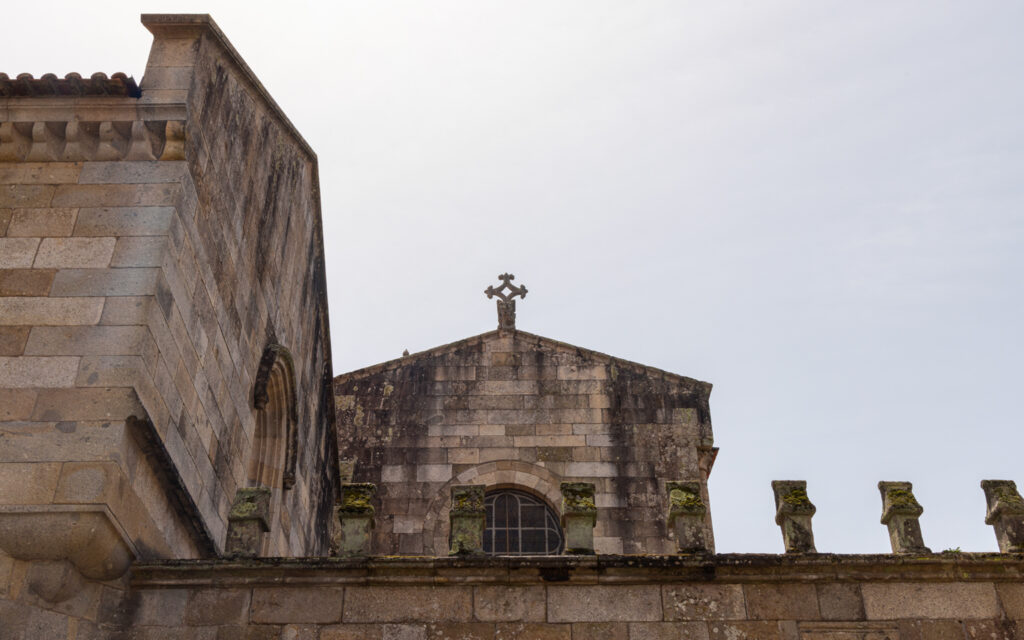Back in Porto, at the meeting of the Expats Everywhere group, we met another David who lived in Braga. David C. offered to show us around, so this morning we met him outside Arco da Porta Nova and chatted over coffee about what it was like living in Braga. Then he introduced us to many sights, with an emphasis on Braga’s extensive history.
First was Museu dos Biscainhos, a residence built by a rich and influential citizen in the later 1600s and occupied by the family through the 1800s. It was right across the street from the bus stop next to “our” Arco da Porta Nova. I had wondered about the grand trees behind the building! Furnished with period furniture and decorative objects, it was elegant. But, it illustrated the limitations put on the lives of women at the time, at least for wealthy women. The guide said the women almost never left the house. Also, it was the men’s sitting room, not the women’s that had a fireplace. A big courtyard in the middle, and a large walled garden behind the house were impressive.

Next, we went inside Sé de Braga, the principal cathedral of the archdiocese.

We had the typical menu-do-dia at Taberna da Fonte (I think I identified the right restaurant on Google maps) – only 6 euros for a hot lunch. It was between the Cámara Municipal and the Piblioteca Publica, which we had seen on the walking tour.
We walked to the southern edge of the historic district to arrive at the Museu D. Diogo de Sousa, displaying archeological discoveries of the area. In the Roman era the city was called Bracara Augusta and was the capital of the Roman province of Galleacia. There were many fascinating artifacts, beautifully displayed with good descriptions. There was also a display of arte rupestre, aka rock art. The renditions of the designs, not meant to look like the original work, showed interesting scribbles and shapes.

There was a hazy view across the valley, and we could see the Sanctuário do Bom Jesus on the ridge opposite.
We went down the block to the Termas Romanas do Alto do Cividade, an archeological dig at the Roman baths. There was also the beginnings of excavating a theater on the side of the hill.

We went inside the Baroque church, Igreja dos Congregados, which turned out to be the church we were photographing the night before.
We stopped for ice cream in Praça da Republica and Pam was thrilled to find some flavors made with plant milk (was it soy or coconut – don’t remember), so she wasn’t limited to fruit sorbet.
Our final stop with David C. was the bookstore Livraria Centésima Página on the Av. Central 118 (looked that up). The bookstore had an antique look, but even more fascinating was the garden in back with a little café. I guess you’d have to be in the know to go there!
It was frustrating to realize that buying books would not be a thing in just any old bookstore until we become fluent readers of Portuguese. Are there any English-language bookstores? Maybe it will be just e-books for us.
It was so nice of David C. to show us around!
